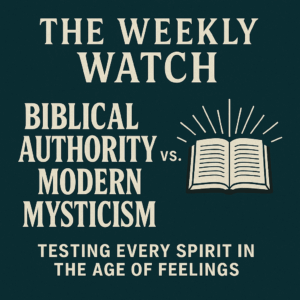⏱️ Estimated Reading Time: 7 min read
Growing up in the Baptist church my family attended, I rarely remember hearing the Gospels preached. It was on rare occasion that the preacher would discussion them. If he did it was the Gospel of John. It might have been the specific theology the church had, but the Gospels although they are Scripture, were put second place behind Paul’s writings. It wasn’t until I attended Bible College that I realized the beautiful theology of each book. Even more, I learned to love the stories of these authors, specifically Luke.
In Luke’s account of Jesus we see a Man empowered by the Spirit, preaching a radical message of the Kingdom of God arriving within history. It is there in Luke that we see this Man changing the world through ordinary means.
Eating and drinking.
Jesus changed the world according to Luke through table fellowship. Luke’s story of Jesus was centered upon the meal setting. Most scholars believe that Luke records ten meals in his Gospel and each one has a specific purpose in revealing an aspect of the Kingdom. I believe we can glean from Jesus’ hospitality an ordinary way of changing the world.
Levi’s Great Feast – Luke 5:27-32
The first meal is focused upon Jesus eating with a converted tax collector and his friends. Jesus revealed to the Pharisees and scribes (who complained that Jesus ate with sinners) that the Kingdom of God is open for sinners and His mission is aimed at treating the sick not the self-righteous.
Dinner at Simon’s House – Luke 7:36-50
The second meal in Luke’s Gospel is at the table of a Pharisee named Simon. Prior to this story in Luke 7:34, Jesus brings up the change from the Pharisees of eating and drinking with sinners (a claim that Jesus didn’t deny). But here in the story as Luke records a woman who had a reputation in the city came and worshiped Jesus. There in the story He revealed that the Kingdom is about forgiveness, receiving the outcasts of the world.
Feeding the 5,000 – Luke 9:10-17
Jesus in blessing the five loaves and two fish demonstrates that the Kingdom of God is about provision and abundance even in the desolate place (Luke 9:12-14). It is also an implicit rebuke to the disciple’s faith.
Serving and Listening at the Table – 10:38-42
As Martha was serving, Mary was listening to Jesus. Jesus shows that listening is an important part of the Kingdom. In order to serve Jesus well, we must listen to Jesus first.
Warning at the Table – Luke 11:37-52
Jesus was once again invited to eat with the Pharisee. While at the table Jesus didn’t wash His hands as custom dictated. The Pharisees were taken back by this disregard for cleanliness. Jesus demonstrates that the Kingdom is concerned with a clean heart more than it is about a clean exterior.
Dining on the Sabbath – Luke 14:1-24
While at another Sabbath afternoon lunch, Jesus taught with a parable about a Wedding Feast. His point was to show that the Kingdom is about humility. Those who humble themselves now in the Kingdom will one day be exalted.
Hanging with Zacchaeus – Luke 19:1-10
In juxtaposition to the story of the Rich Young Ruler, Luke recorded the story of Zacchaeus. There at the dinner table Jesus announced that salvation has arrived. There at the table Jesus unpacked the mission of the Kingdom – to seek and to save the lost (Luke 19:10).
The Last Supper – Luke 22:14-38
As Jesus and His disciples gathered to eat, He revealed to them the meaning of the bread and wine. The ancient Passover meal is redefined around the person of Jesus. His death and resurrection provide the meaning of the Kingdom. Jesus leaves an appetizer as we long for the full course in the Kingdom.
Breaking Bread – Luke 24:28-32
Given the events of the crucifixion, two disciples head back home to Emmaus. Jesus incognito approached these disciples and inquired about their sad disposition. Upon their lack of faith, the risen Jesus provided them an in-depth Bible study. But the disciples didn’t realize it was Jesus until “the breaking of bread.” Their eyes were opened and their hearts burned.
Jesus Asking for a Fish – Luke 24:36-42
Jesus appeared to His disciples and announced peace. They thought it was a spirit! As Jesus spoke and even after showing them His hands, they still didn’t believe. It wasn’t until He ate a fish that they realized it was the risen Jesus. Then He spoke to open their minds to the Scripture.
These are the ten meals in Luke. But this doesn’t account for other “eating and drinking” stories and settings. Take for example the first temptation of Jesus (Luke 4:1-4), the question about fasting (Luke 5:33-39), the disciples plucking grain on the Sabbath (Luke 6:1-5), the seventy called to take no food (Luke 10:1-9), Lord’s Prayer asking for daily bread (Luke 11:1-13), the party for the lost brother (Luke 15:11-32), and table prepared for Lazarus (Luke 16:19-31).
So what’s the point? Jesus was turning the world upside down one dinner at a time. He was challenging the cultural norms at the Sabbath lunch. He was revealing the Kingdom while eating fish. He changed the world through ordinary means. Indeed, there is a way to eat and drink while participating in the present evil age like in the days of Noah (Luke 17:27) but for Jesus, He invited His hearers to experience the reign of God one bite at a time. There as Jesus received sinners and ate with them He demonstrated the reality of God’s Kingdom. The first-century meal was a place of political, social, and religious dialogue. Around the table, Jesus discussed the most important reality – God’s Kingdom.
Luke doesn’t stop there. He continues in the Book of Acts to show that table fellowship was foundational for the early church. It appears that hospitality and table fellowship is a key to understanding the meaning of God’s Kingdom. In the intimacy of the meal, surrounded by people, the message of the Kingdom irrupts.
How should we think about eating and drinking?
First eating is a gift of God and therefore isn’t “ordinary” the way we define it. Praying for daily bread is a recognition of God’s gracious provision (Luke 11:3). It is extraordinary that God would even care to provide us daily sustenance. This ought to lead us to see that even in what we consider “ordinary” God is able to demonstrate His goodness.
Second, we should consider Jesus’ evangelism method of table fellowship. Jesus dined with sinners and saints – the rebels and the religious. Jesus opened up Himself to ridicule by eating with tax collectors but welcomed the opposition. The very nature of God’s Kingdom is an open invitation to sinners. Jesus’ hospitality is a model for us as we seek to have an open conversation about the Kingdom. Want to share your faith – invite someone over for a meal.
Lastly, table fellowship is an important aspect of the church. Of course, we have as one of our ordinances The Lord’s Supper. There as we eat and drink we proclaim the Lord’s death. But I think one of the best ways of building a loving and trusting community of faith is having a fellowship meal.
At my church, we have ours every Wednesday evening. It is a time of laughs, encouragement, and conversation about Jesus. For some churches having a huge meal just isn’t practical. Maybe have a fellowship meal in the small group or Bible study. My professor Alan Streett suggests that table fellowship is foundational to understanding God’s Kingdom. I believe he is correct. May we embody the message of God’s Kingdom as we seek to change the world one bite at a time.




